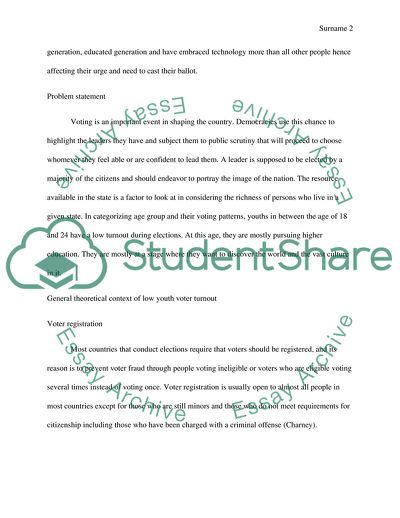Cite this document
(General Theoretical Context of Low Youth Voter Turnout Coursework Example | Topics and Well Written Essays - 3500 words, n.d.)
General Theoretical Context of Low Youth Voter Turnout Coursework Example | Topics and Well Written Essays - 3500 words. https://studentshare.org/politics/1843364-politics
General Theoretical Context of Low Youth Voter Turnout Coursework Example | Topics and Well Written Essays - 3500 words. https://studentshare.org/politics/1843364-politics
(General Theoretical Context of Low Youth Voter Turnout Coursework Example | Topics and Well Written Essays - 3500 Words)
General Theoretical Context of Low Youth Voter Turnout Coursework Example | Topics and Well Written Essays - 3500 Words. https://studentshare.org/politics/1843364-politics.
General Theoretical Context of Low Youth Voter Turnout Coursework Example | Topics and Well Written Essays - 3500 Words. https://studentshare.org/politics/1843364-politics.
“General Theoretical Context of Low Youth Voter Turnout Coursework Example | Topics and Well Written Essays - 3500 Words”. https://studentshare.org/politics/1843364-politics.


